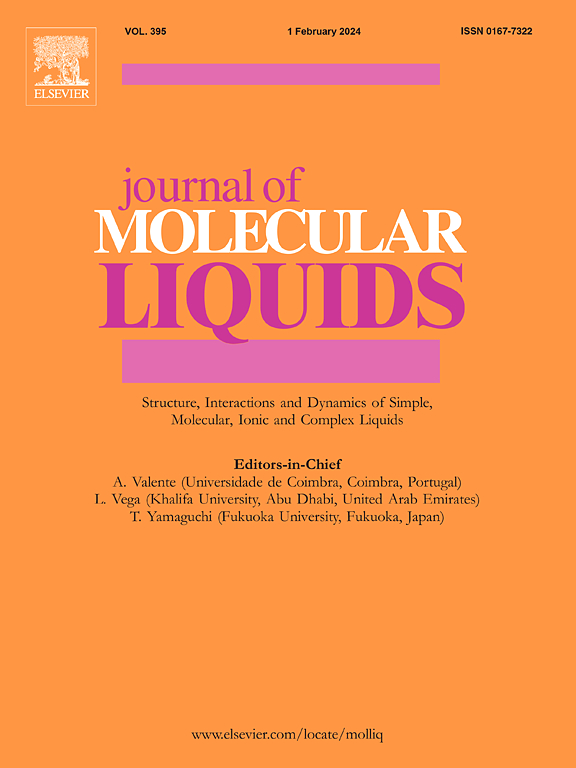Enhancing heavy crude oil mobility at reservoir conditions by nanofluid injection in wells with previous steam stimulation cycles: Experimental evaluation and field trial implementation
IF 5.3
2区 化学
Q2 CHEMISTRY, PHYSICAL
引用次数: 0
Abstract
This study introduced a novel nanofluid injection method to enhance heavy crude oil recovery in steam-impacted wells, offering an alternative to traditional steam injection techniques. This research focuses on improving oil mobility by disrupting the viscoelastic network of asphaltenes through silica nanoparticle adsorption. Comprehensive experimental evaluations included nanoparticle characterization, reservoir fluid analysis, and dynamic core-flooding tests under reservoir conditions. Three carrier fluids, surfactant-based (SB), diesel-based (DT), and light hydrocarbon with surfactant (LHC + S), were tested with silica nanoparticles to identify the most effective combination. Key findings demonstrated that a concentration of 300 mg L−1 of silica nanoparticles dispersed in LHC + S reduced oil viscosity by 57 % at 25 °C, lowered the contact angle from 47° to 15°, and decreased interfacial tension by 38.0 %. Core flooding revealed that nanofluid injection increased the recovery factor from 89 % to 92 %, confirming enhanced crude oil displacement. Field trials in two mature wells subjected to four prior steam cycles showed oil production increases of 32 % and 56 % during the first-month post-treatment, with cumulative gains of 11,148 Bbl and 2240 Bbl, respectively. Additionally, viscosity reductions of 60 % were sustained over 12 months, validating the long-term efficacy of nanofluid injection as a nonthermal Enhanced Oil Recovery (EOR) method. By eliminating the need for steam and significantly improving the oil displacement efficiency, this study demonstrates the potential of nanofluid injection to reduce the operational costs and environmental impact in heavy oil fields undergoing thermal depletion.

求助全文
约1分钟内获得全文
求助全文
来源期刊

Journal of Molecular Liquids
化学-物理:原子、分子和化学物理
CiteScore
10.30
自引率
16.70%
发文量
2597
审稿时长
78 days
期刊介绍:
The journal includes papers in the following areas:
– Simple organic liquids and mixtures
– Ionic liquids
– Surfactant solutions (including micelles and vesicles) and liquid interfaces
– Colloidal solutions and nanoparticles
– Thermotropic and lyotropic liquid crystals
– Ferrofluids
– Water, aqueous solutions and other hydrogen-bonded liquids
– Lubricants, polymer solutions and melts
– Molten metals and salts
– Phase transitions and critical phenomena in liquids and confined fluids
– Self assembly in complex liquids.– Biomolecules in solution
The emphasis is on the molecular (or microscopic) understanding of particular liquids or liquid systems, especially concerning structure, dynamics and intermolecular forces. The experimental techniques used may include:
– Conventional spectroscopy (mid-IR and far-IR, Raman, NMR, etc.)
– Non-linear optics and time resolved spectroscopy (psec, fsec, asec, ISRS, etc.)
– Light scattering (Rayleigh, Brillouin, PCS, etc.)
– Dielectric relaxation
– X-ray and neutron scattering and diffraction.
Experimental studies, computer simulations (MD or MC) and analytical theory will be considered for publication; papers just reporting experimental results that do not contribute to the understanding of the fundamentals of molecular and ionic liquids will not be accepted. Only papers of a non-routine nature and advancing the field will be considered for publication.
 求助内容:
求助内容: 应助结果提醒方式:
应助结果提醒方式:


